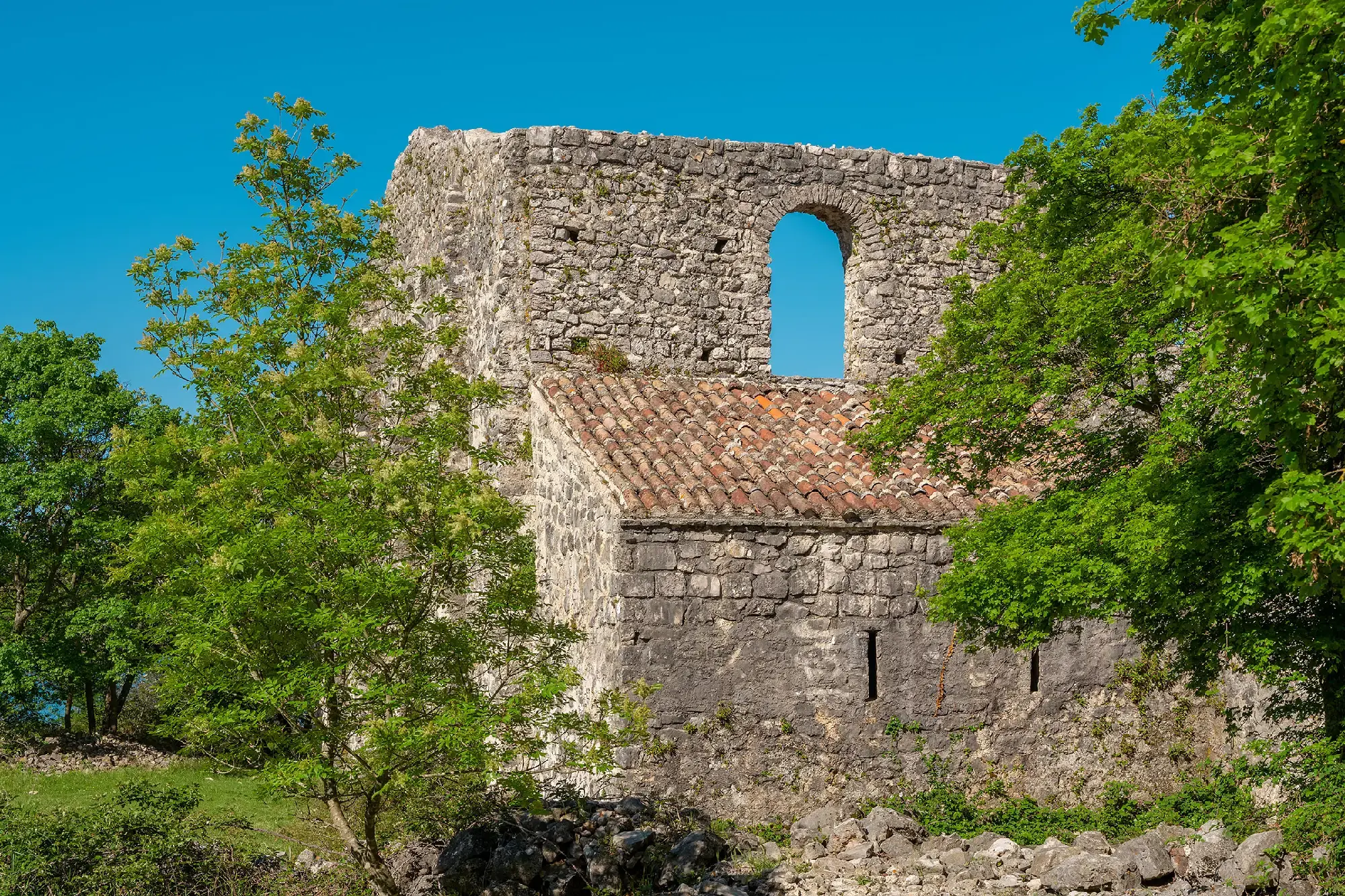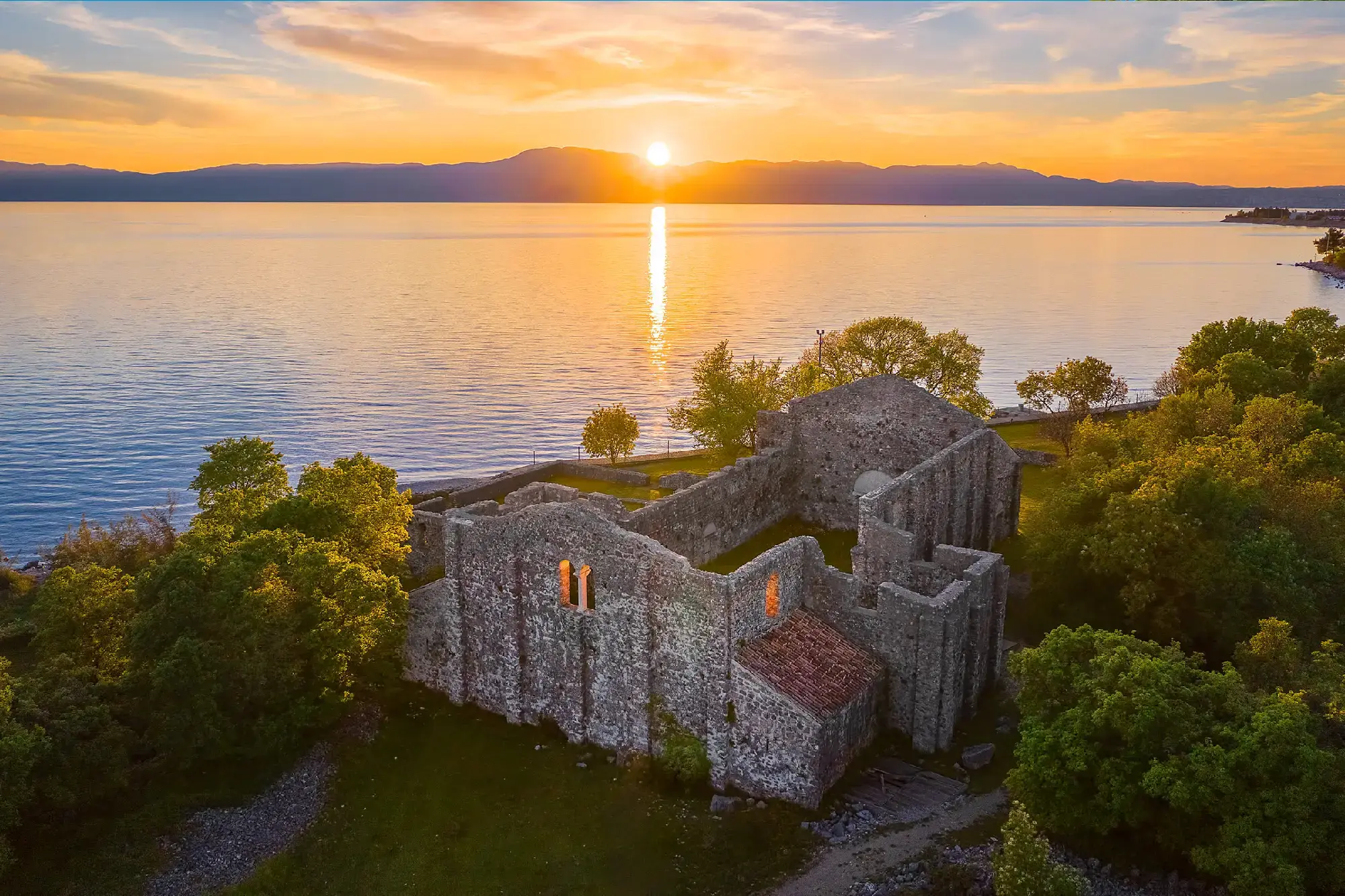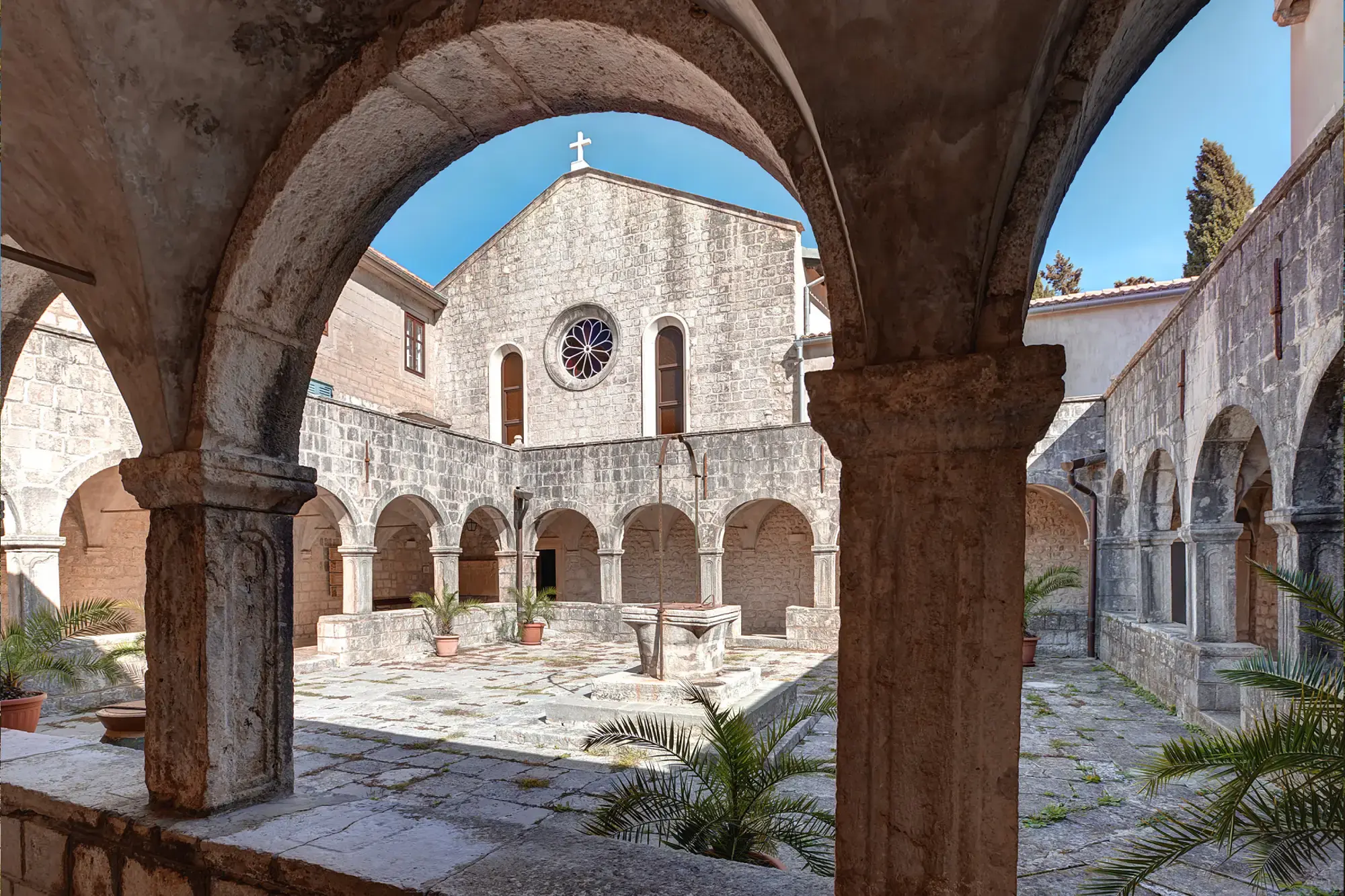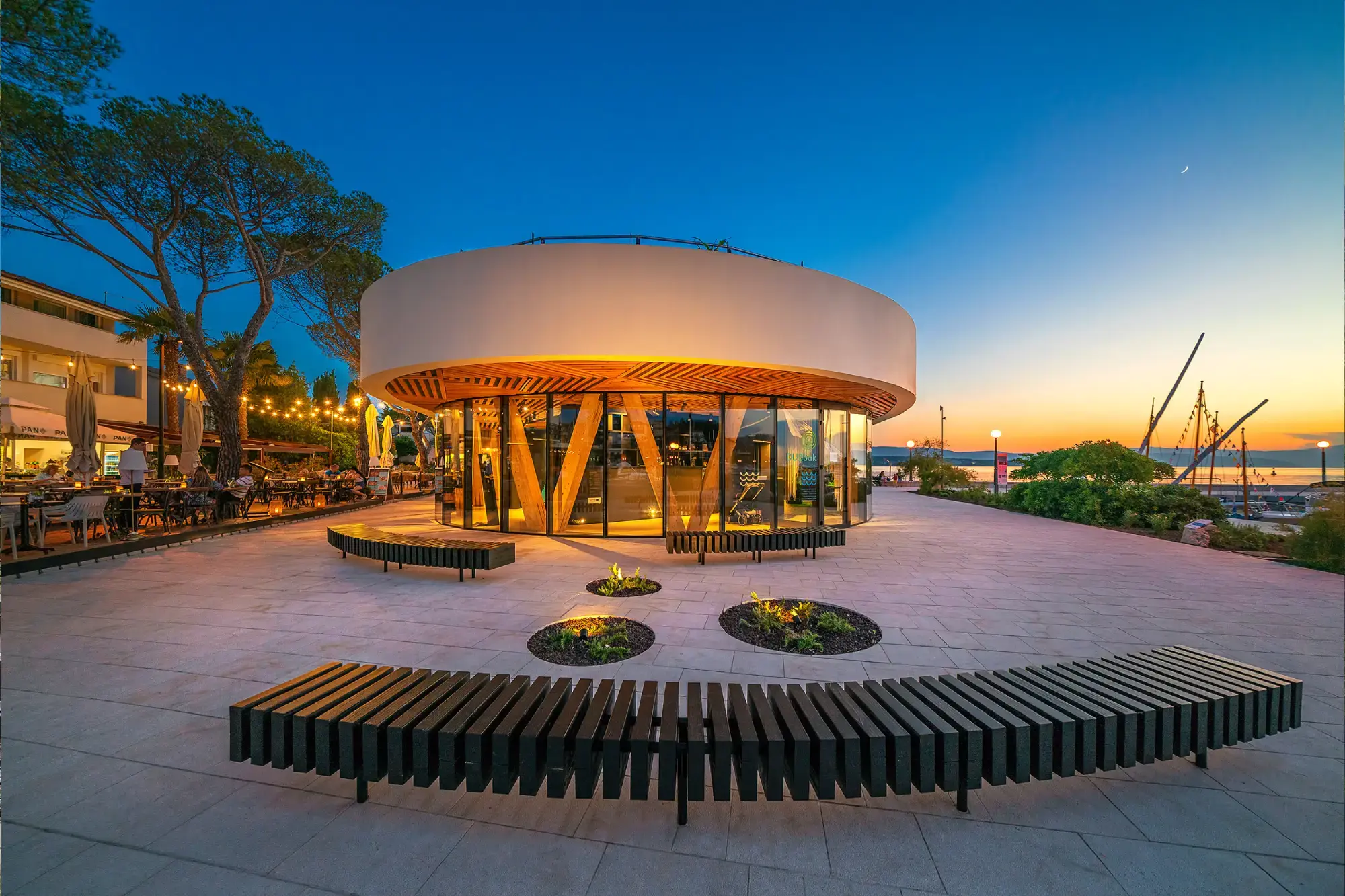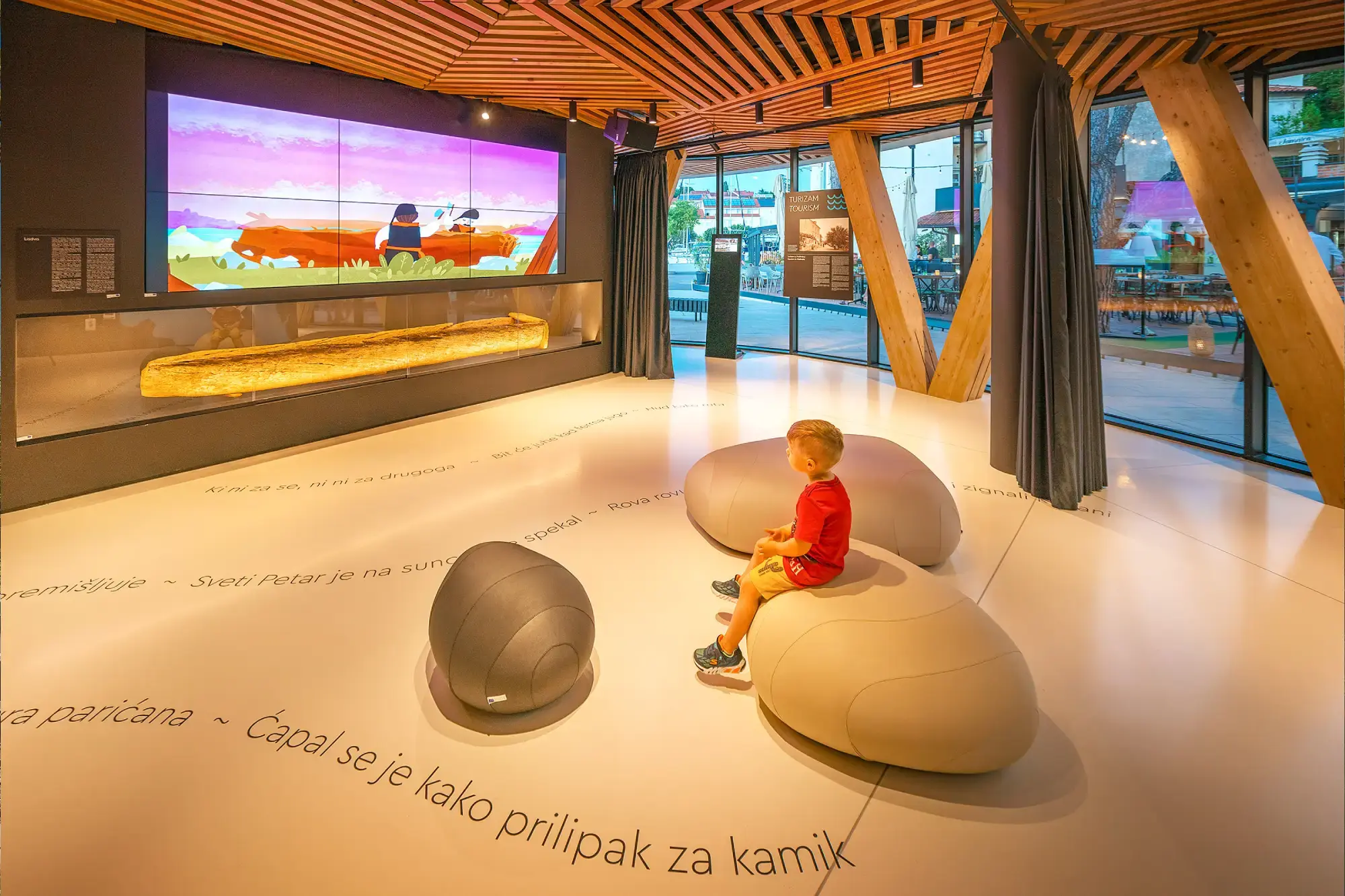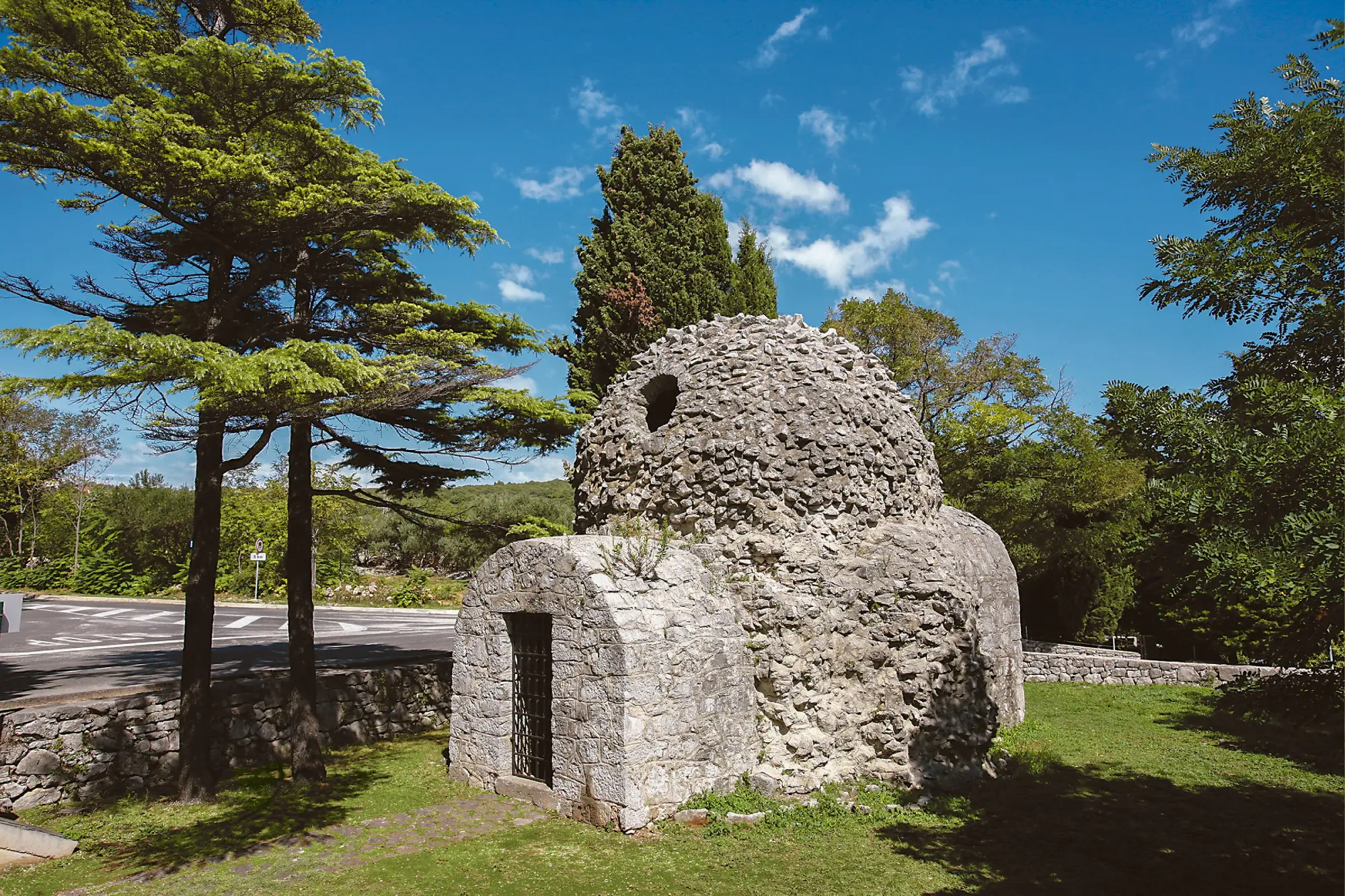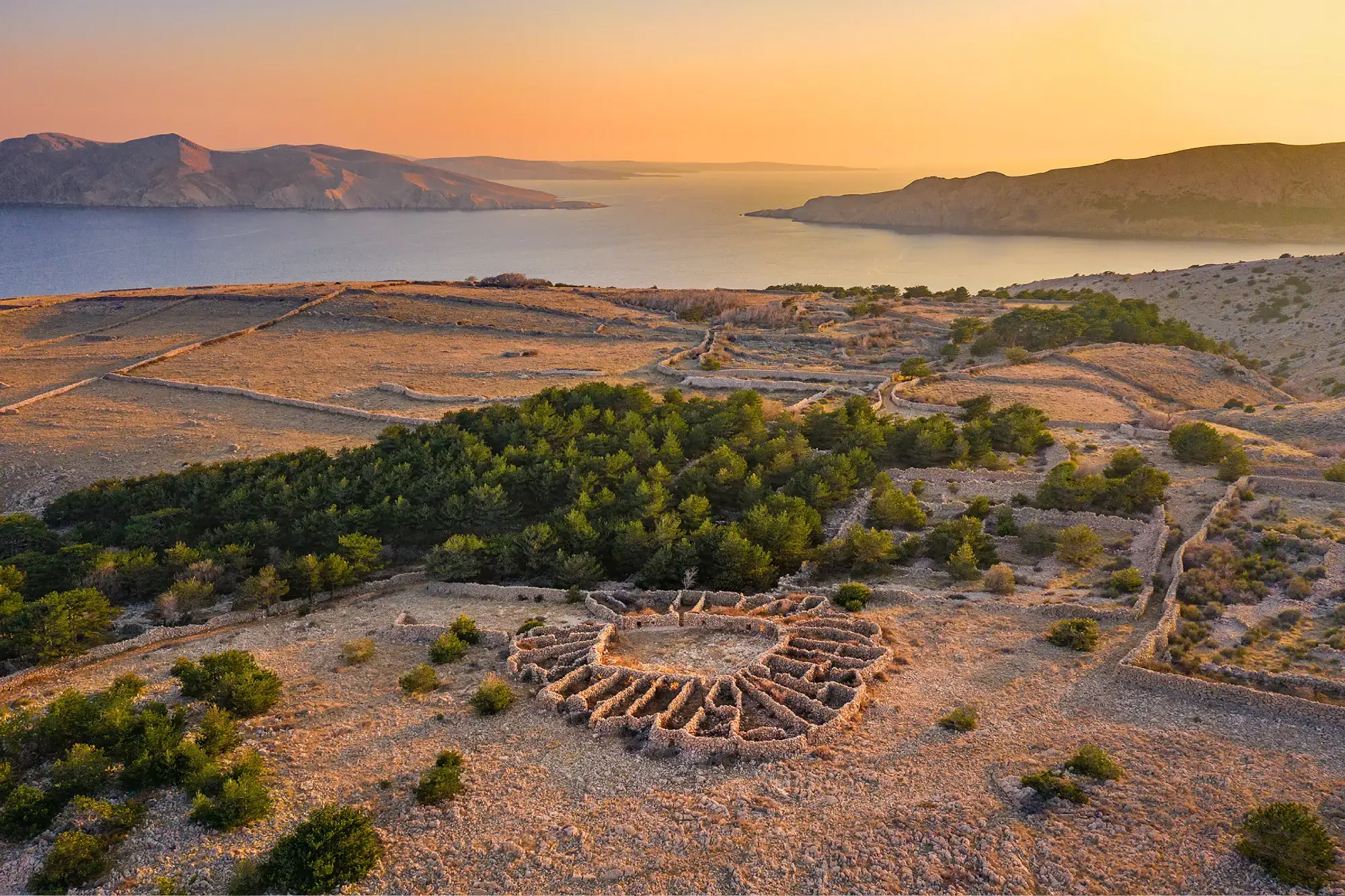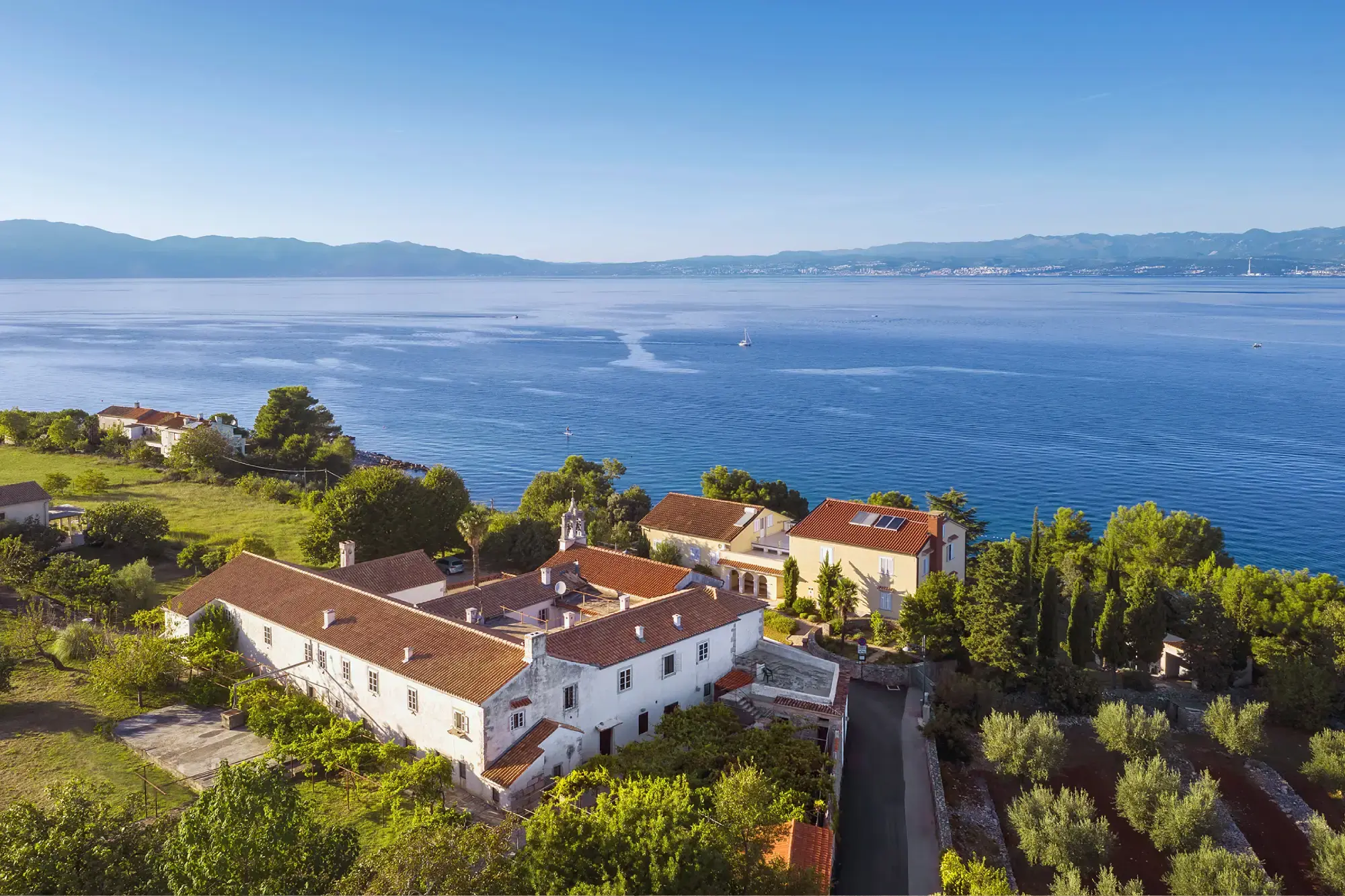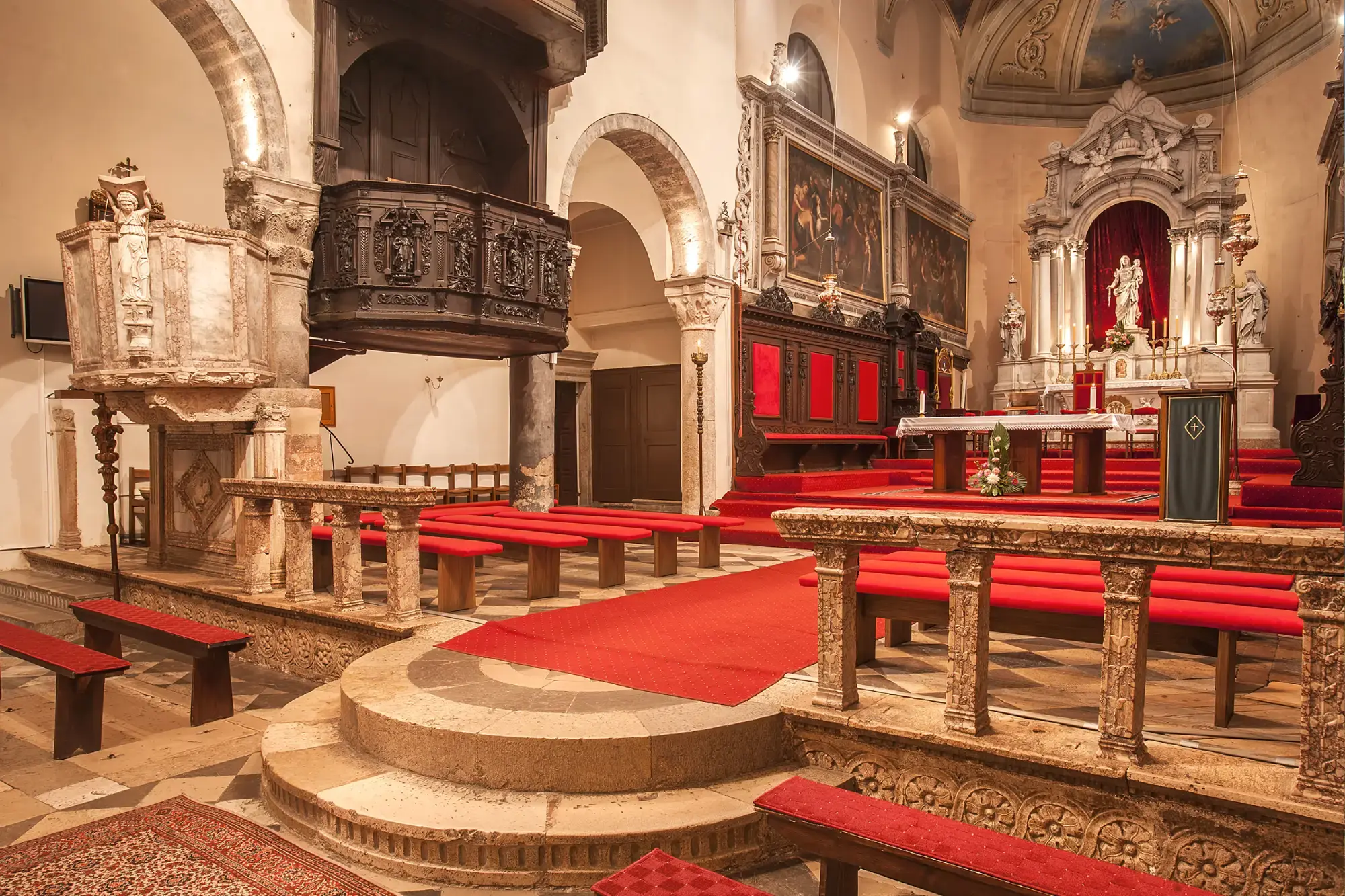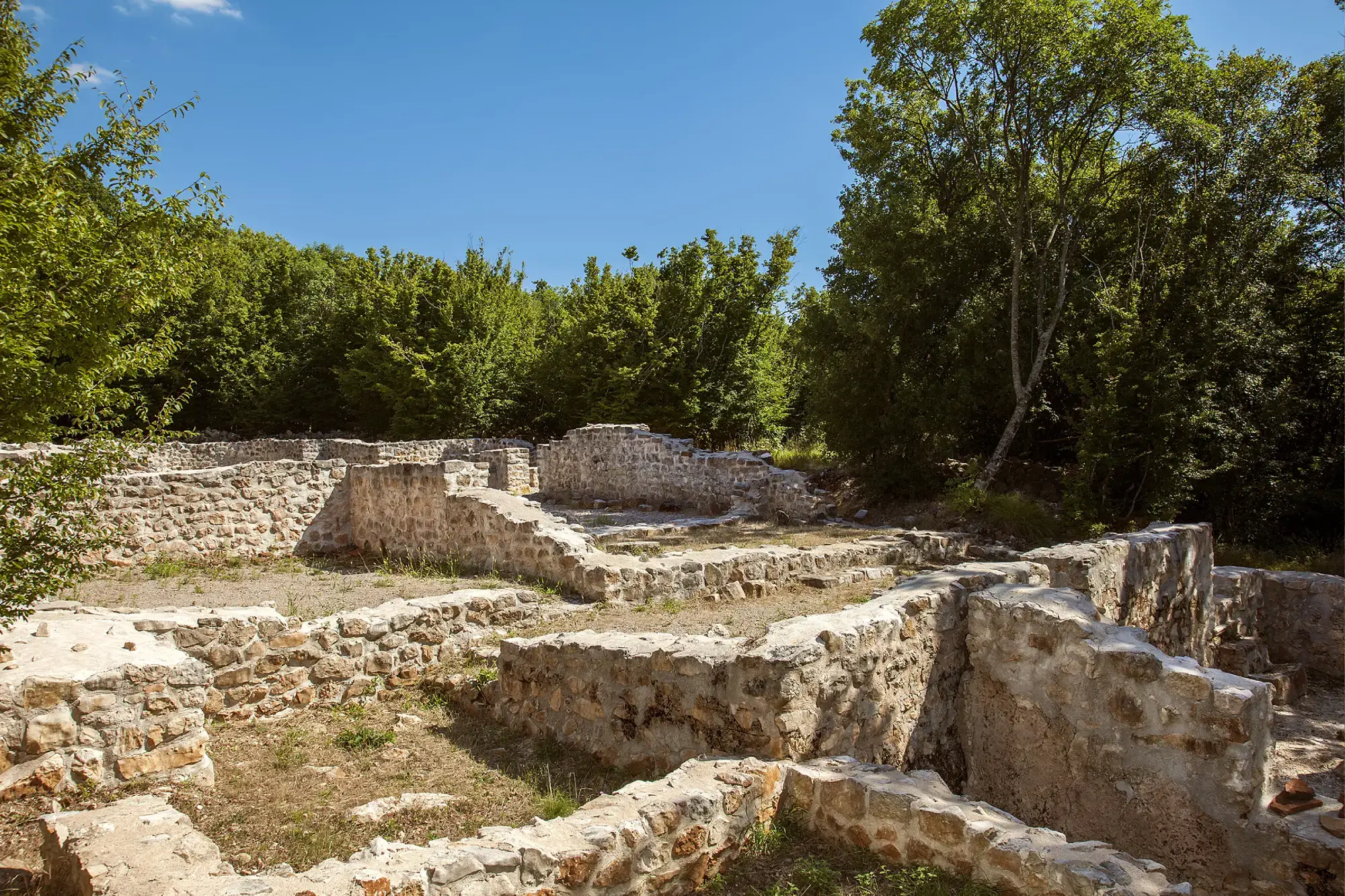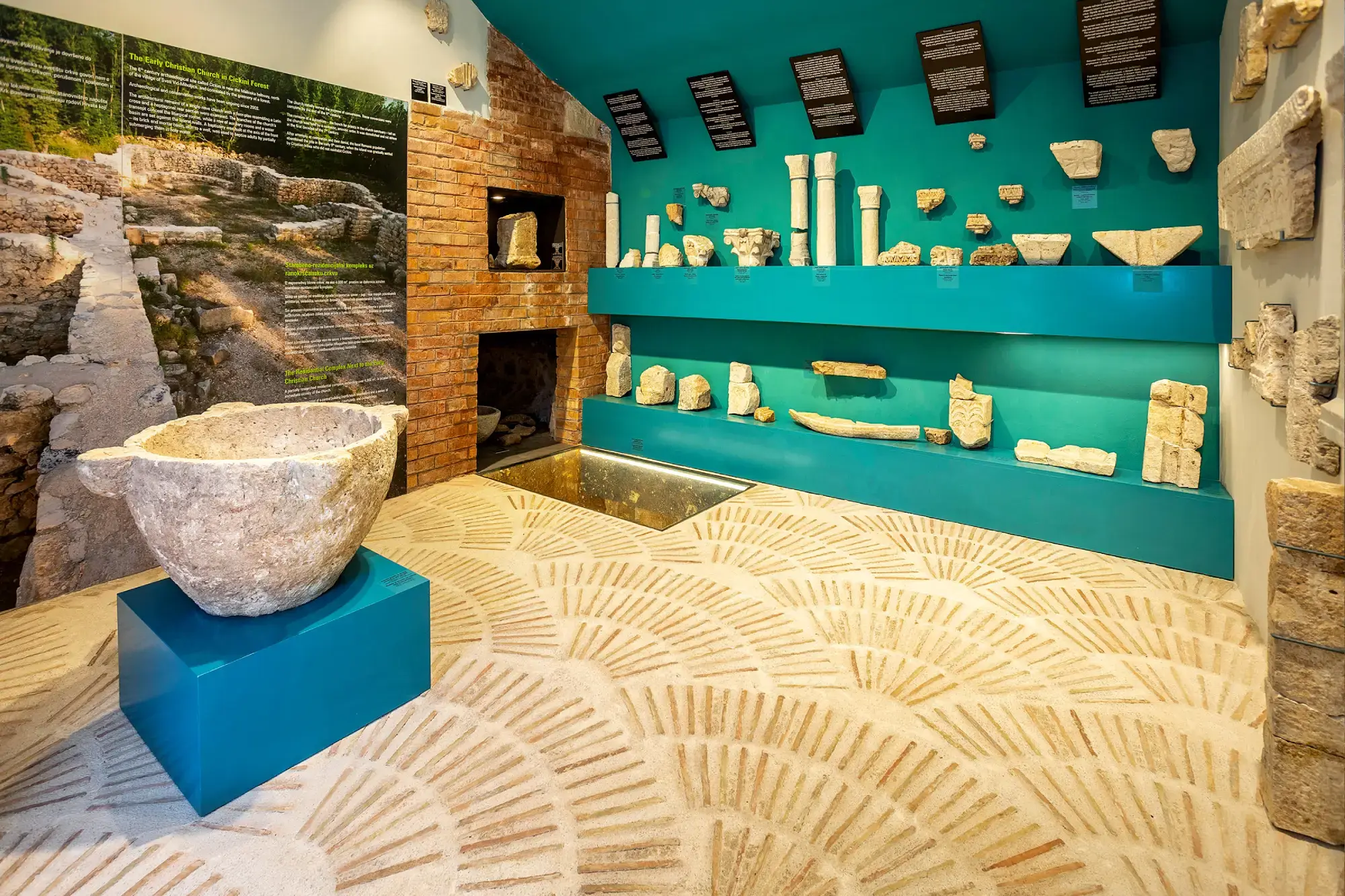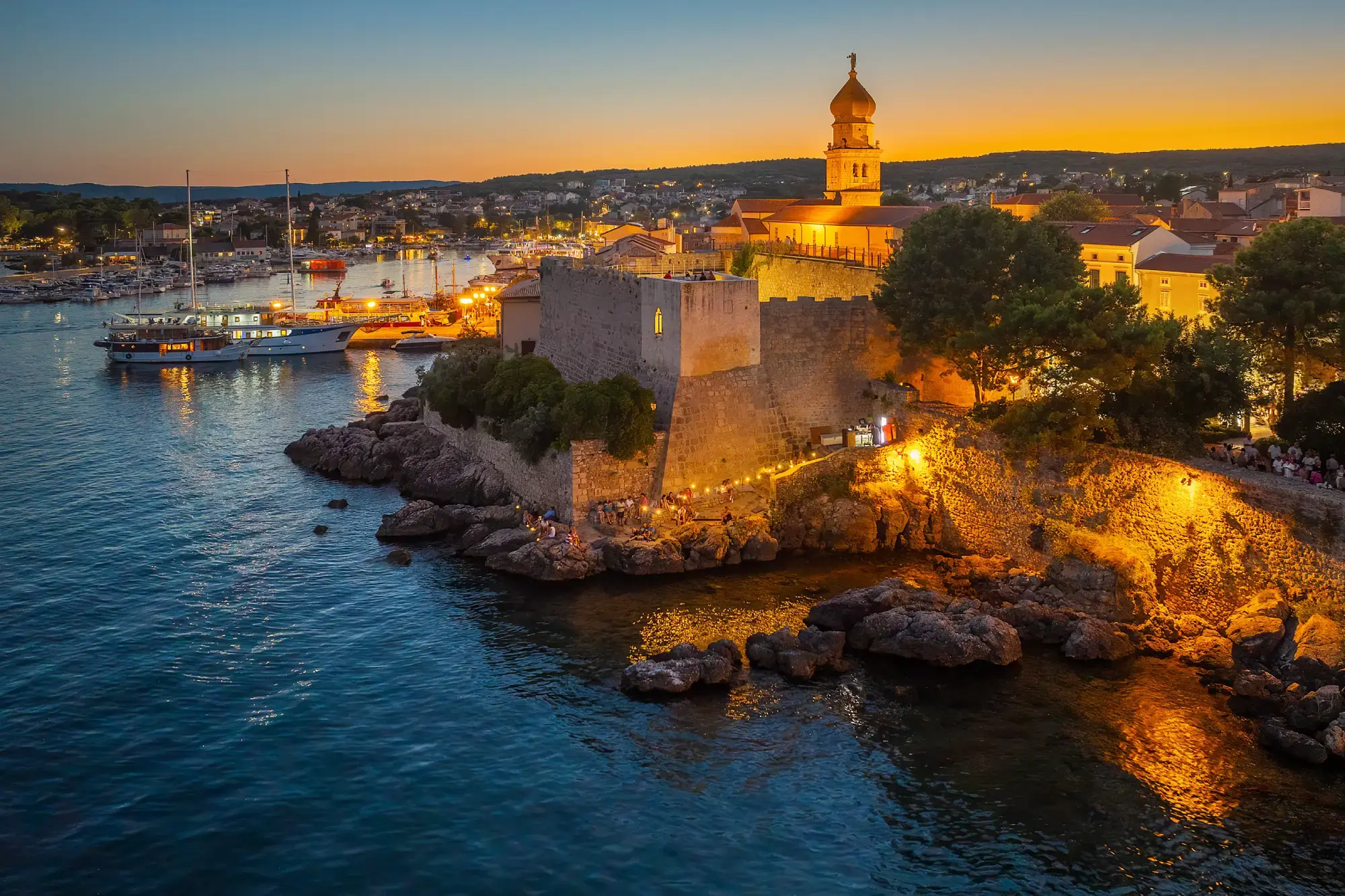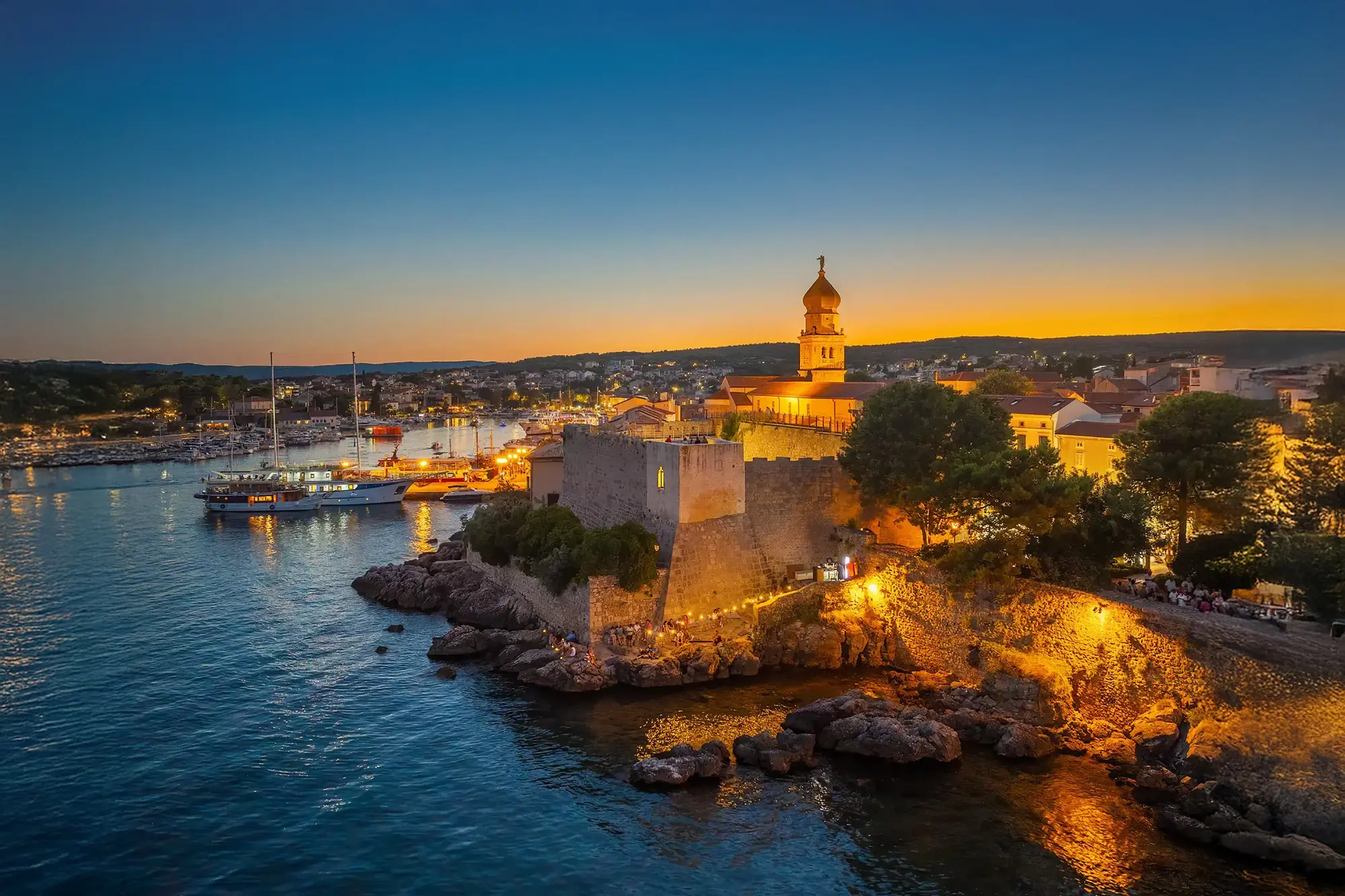
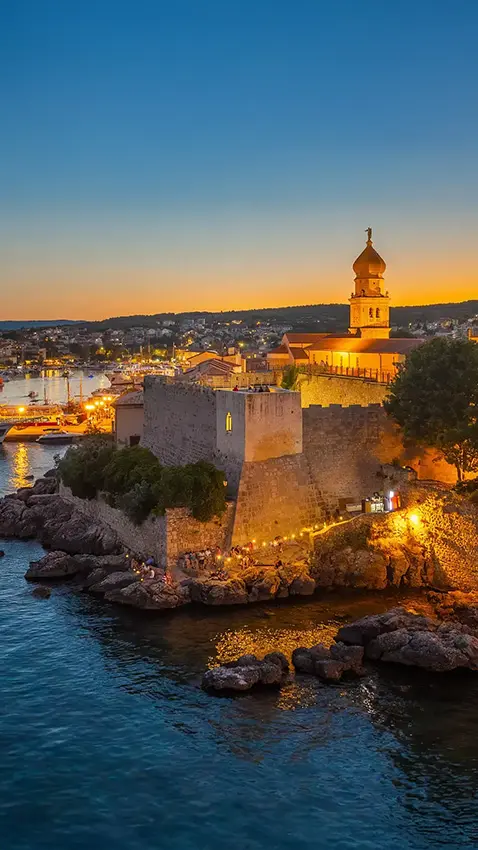
Činjenice
Cultura
The wealth of cultural, historical and customary heritage of the island of Krk is the most interesting area of research for every fan of the past centuries
The two most important historical findings are Roman municipality Curicta (Krk), in particular the Krk Cathedral, the Cathedral of the 1500 years old Krk's diocese, and a long ago abandoned ancient town of Fulfinum near Omišalj, founded in the first century AD. In the fifth century AD an impressive early Christian complex Mirine was build on the outskirts of this ancient town, and the church of St. Nicholas stands up to the present day. A handful of old Croatian churches reflect the rich cultural heritage of this beautiful island (St. Dunat, St. Krševan from the 9th century, etc.). The Baška Tablet dating from 1100, one of the earliest preserved written monuments in Croatian found in the church of St. Lucy in Jurandvor is a unique Glagolitic heritage of the island of Krk.
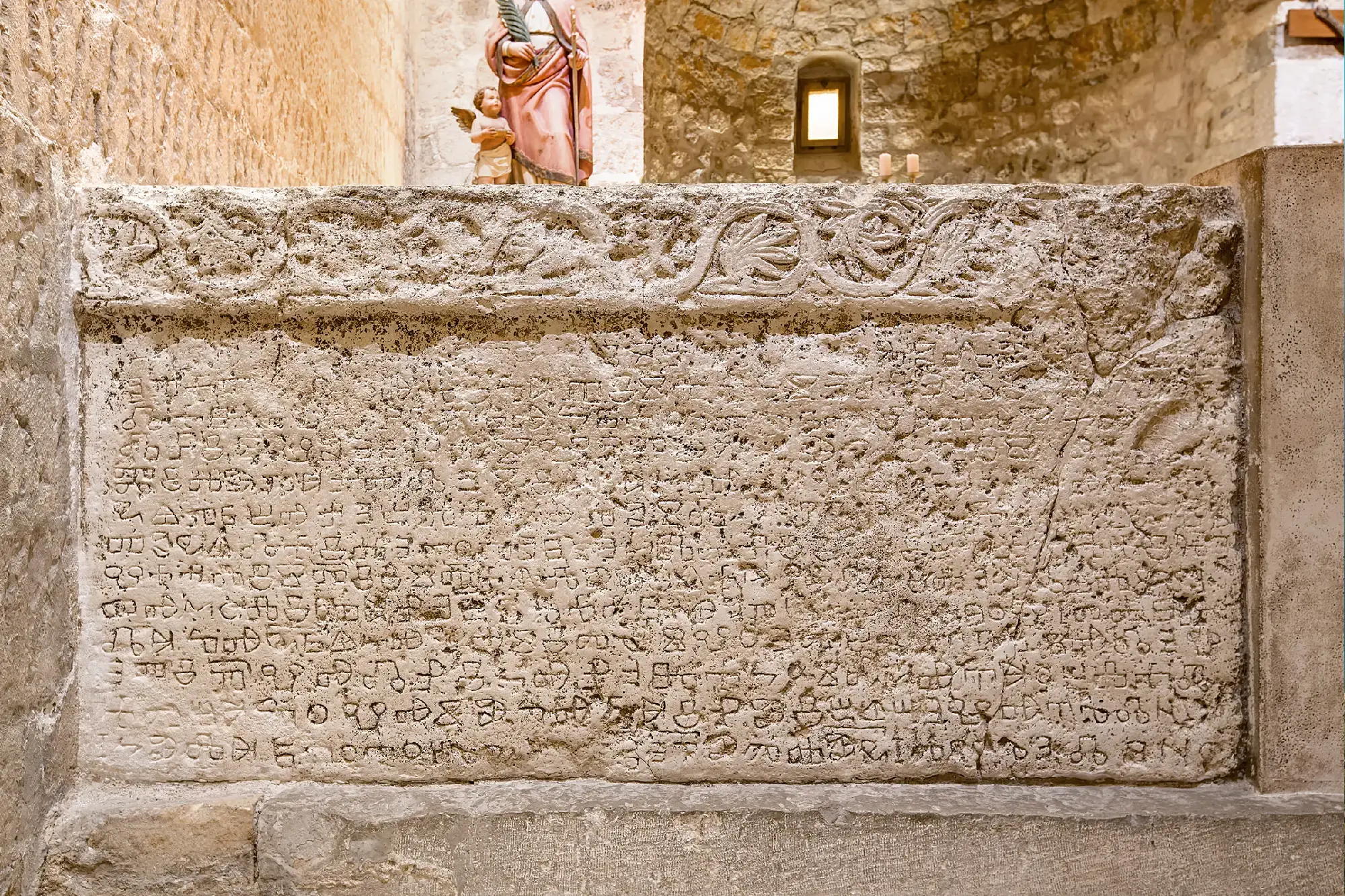
The historic center of the island since Illyrian and Roman times called 'the most splendid town of the people of Krk' as evidenced by the Latin stone inscription from the 3rd or 4th century AD, is also known for its magnificent Frankopan Castle and the excellently preserved town walls. There are also picturesque medieval castles Omišalj, Vrbnik, Dobinj and Baška, Punat with Košljun, a unique treasury of natural and cultural heritage guarded by Franciscan monks for 550 years. Not far from Malinska, in Porat, there is a monastery of St. Francis built over 500 years ago and a monastery museum with valuable exhibits. In the Glagolitic lapidary of the monastery there are copies of the oldest and most important Croatian Glagolitic texts. This is only a small part of what is worth seeing.
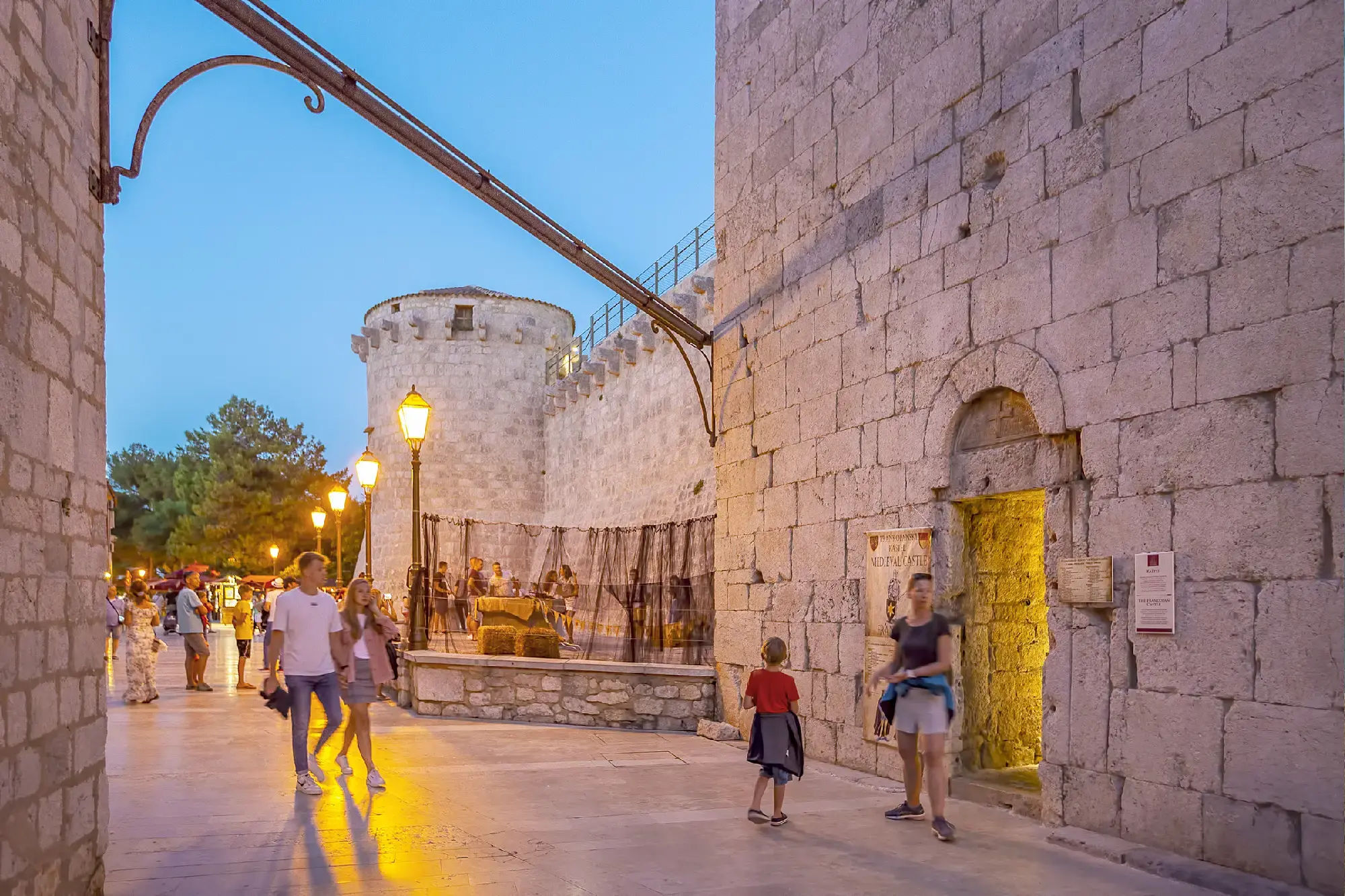
See photos of the culture
Contact
Contact us
We will be happy to answer all your questions.

